With safety concerns on the rise, the demand for innovative solutions like smoke detection stickers is set to grow rapidly in 2025. Navigating the latest options can feel overwhelming, yet understanding these advancements is crucial for protecting homes and businesses.
This guide will demystify smoke detection stickers by breaking down how they work, where they can be used, and what sets them apart from traditional detectors. You will find practical installation tips, maintenance advice, and a comparison with older technologies.
By the end, you will be empowered with up-to-date knowledge to make informed decisions and choose the right smoke detection stickers for your needs.
What Are Smoke Detection Stickers?
Smoke detection stickers are a new generation of fire safety devices designed for modern living and working environments. These ultra-thin, adhesive sensors are engineered to detect the presence of smoke particles in the air, providing a discreet yet effective solution for early fire warning. With their compact form factor, smoke detection stickers can be installed almost anywhere, offering flexibility that traditional smoke detectors often lack.
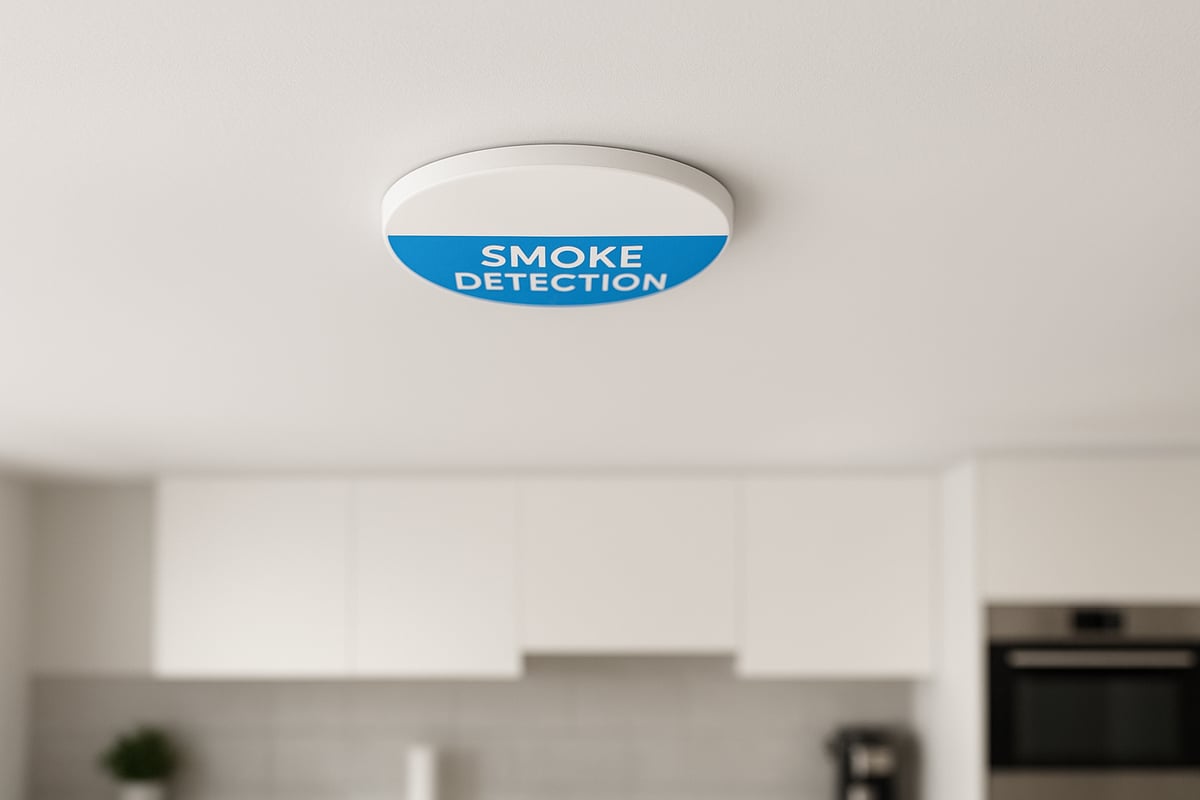
Definition and Core Technology
Smoke detection stickers utilise advanced sensing mechanisms to identify smoke particles in real time. These devices can incorporate chemical, optical, or cutting-edge nano-sensor technologies. Chemical sensors react to changes in air composition caused by smoke, while optical sensors detect the scattering of light by smoke particles. Nanomaterial-based sensors offer heightened sensitivity and rapid response times.
Compared to traditional smoke detectors, smoke detection stickers are far more compact and flexible. They adhere directly to surfaces such as ceilings or walls without the need for bulky mounts or complex wiring. Their slim design allows them to remain almost invisible, making them ideal for spaces where aesthetics matter.
Several manufacturers are leading the way in developing high-performance smoke detection stickers. Their products are designed to function reliably across a range of temperatures and humidity levels. Adaptable to various environments, these stickers can be used in homes, offices, and even vehicles.
As technology advances, the UK market has seen a substantial increase in demand for innovative fire safety solutions. According to the UK Smoke Detector Market Outlook, the adoption of smart sensor technology, including smoke detection stickers, is expected to rise significantly in the coming years.
Key Applications and Use Cases
Smoke detection stickers are versatile and suitable for a wide range of environments. In residential settings, they can be discreetly placed in kitchens, bedrooms, and hallways, where traditional detectors might be visually intrusive. Their slim profile enables installation in areas with limited space or challenging layouts.
In commercial and public buildings such as offices, hotels, schools, and public transport, smoke detection stickers offer valuable coverage without compromising on design. They are increasingly being used in UK schools and public buildings, reflecting a trend towards more integrated and less obtrusive fire safety measures.
Industrial environments also benefit from these stickers. Warehouses, manufacturing plants, and storage facilities often have unique safety challenges that require flexible and scalable solutions. Temporary installations, such as events, exhibitions, and construction sites, can take advantage of the easy setup and removal of smoke detection stickers.
Recent statistics highlight a growing adoption of smoke detection stickers in UK educational and public sectors, driven by the need for discreet, reliable, and easily maintained fire detection systems.
Advantages Over Traditional Smoke Detectors
Smoke detection stickers offer several advantages over conventional smoke alarms. Their unobtrusive design allows for seamless integration with interior aesthetics, eliminating the need for large, visible devices. Installation is straightforward, requiring minimal tools or expertise, which reduces both time and cost.
These stickers are particularly cost effective for large scale deployments, such as in hotels or multi unit residential buildings. Their flexibility ensures enhanced coverage, even in hard to reach or unconventional spaces where traditional detectors may not fit.
A notable example is a major hotel chain that implemented smoke detection stickers across its properties. The result was improved guest safety, increased compliance with fire safety regulations, and high satisfaction among facility managers due to the ease of installation and maintenance.
Smoke detection stickers represent a significant evolution in fire safety, combining advanced technology with user friendly design to meet the needs of diverse environments.
How Smoke Detection Stickers Work: Technology Explained
Understanding how smoke detection stickers operate is key to appreciating their effectiveness. These innovative devices rely on advanced sensor systems, smart connectivity, and careful calibration to provide reliable protection in a wide range of environments.

Sensor Mechanisms and Detection Methods
At the heart of smoke detection stickers is a miniature sensor array designed to identify smoke particles in the air. These sensors can use photoelectric, ionisation, or cutting edge nanomaterial technologies. Photoelectric sensors detect changes in light patterns caused by smoke, while ionisation sensors monitor disruptions in electrical currents. Nanomaterial sensors, a recent innovation, offer high sensitivity and rapid response times.
The detection process begins when smoke enters the sensing area of the sticker. Smoke disrupts the sensor’s normal operation, instantly triggering an alert. The compact design of smoke detection stickers allows them to function unobtrusively in any location.
Powering these stickers can be achieved through small batteries, energy harvesting from ambient light, or in some cases, wired connections. Each method ensures the sensor remains active and reliable. Sensitivity calibration is crucial, as it determines how much smoke must be present to activate the alarm. Manufacturers use rigorous testing to balance false alarms with dependable detection.
For a deeper dive into the technology powering these devices, see Smart sensor technology explained.
Connectivity and Alert Systems
Smoke detection stickers can function as standalone units or as part of a connected network. Standalone stickers are simple and effective for single rooms or small spaces. In contrast, networked stickers use wireless communication such as Bluetooth, Wi Fi, or IoT protocols to link multiple sensors throughout a building.
When smoke is detected, the sticker can trigger a local audible alert or send notifications to smartphones and building management systems. Mobile app integration means users receive real time updates and can monitor the status of every sticker in their property.
Data privacy and security are important considerations. Modern smoke detection stickers use encrypted channels to protect information and prevent unauthorised access.
Integration with smart home systems is increasingly common. For example, a sticker can be programmed to trigger other safety systems, such as unlocking doors or activating ventilation, when smoke is detected. This interconnected approach enhances overall safety and peace of mind.
Limitations and Considerations
Despite their many strengths, smoke detection stickers do have some limitations. Environmental factors such as high humidity, dust, or unusual airflow can impact sensor performance. Regular checks and cleaning help maintain accuracy.
The lifespan of smoke detection stickers varies by model and technology, but most require replacement every few years. Following manufacturer guidelines for maintenance and replacement is essential.
Regulatory standards in the UK and EU set strict requirements for smoke detection devices. Stickers must meet these standards to be approved for use in homes and businesses. Users should always verify that their chosen product is certified and compliant.
False positives can occasionally occur, especially in kitchens or areas with fluctuating air quality. To reduce nuisance alerts, sensitivity settings can be adjusted, and stickers should be installed away from sources of steam or dust.
Overall, smoke detection stickers offer a flexible and modern solution for fire safety. By understanding their operation, connectivity, and limitations, users can make informed choices and maximise their protection.
Step-by-Step Guide: Installing and Maintaining Smoke Detection Stickers
Ensuring your smoke detection stickers are installed and maintained correctly is essential for optimal safety. This section provides a clear, actionable guide to help you select, fit, and look after your devices, whether you are a homeowner or managing a large facility.

Choosing the Right Sticker for Your Needs
Selecting the best smoke detection stickers starts with understanding your environment and safety requirements. Begin by assessing the size and layout of your space, noting high-risk areas like kitchens or storage zones. Consider how many smoke detection stickers are needed based on the number of rooms and occupancy levels.
Evaluate sticker specifications carefully. Look for details such as sensitivity rating, detection range, and whether the unit offers connectivity to smart systems or mobile alerts. This ensures the chosen smoke detection stickers match the fire risks present in your home or business.
Opt for certified products that meet UK and EU fire safety standards. Trusted brands often publish compliance details and third-party test results. Choosing reputable smoke detection stickers with clear technical documentation helps guarantee reliability and peace of mind.
Before purchasing, compare product reviews and consult recommendations from industry experts. This can help you identify smoke detection stickers that deliver consistent performance and minimal false alarms. Always ensure the product suits the specific challenges of your property, such as high ceilings or unique room layouts.
Installation Process: Step-by-Step
Proper installation is crucial for the effectiveness of smoke detection stickers. Begin by thoroughly cleaning the intended surface, making sure it is dry and free from dust or grease. This promotes strong adhesion and sensor accuracy.
Follow precise placement guidelines. Position smoke detection stickers on ceilings, ideally in the centre of each room and away from vents or fans. Avoid placing them too close to cooking appliances or windows, as this can trigger false alarms or reduce sensitivity.
To apply the sticker, peel away the protective backing and press the adhesive side firmly onto the surface. Hold in place for several seconds to ensure a secure bond. After installation, test the smoke detection stickers using the manufacturer’s recommended procedure to confirm they are operating correctly.
For more detailed advice, consult best practice for installing sensors which provides a comprehensive setup guide relevant to smoke detection stickers. Document each installation location for future reference and compliance checks.
| Step | Action | Tip |
|---|---|---|
| Surface Prep | Clean and dry area | Use a lint-free cloth |
| Placement | Ceiling, away from vents and windows | Follow manufacturer’s diagram |
| Application | Press adhesive side firmly | Ensure even pressure |
| Initial Test | Activate test mode | Check for prompt alert |
Maintenance and Troubleshooting
Routine maintenance ensures your smoke detection stickers remain effective over time. Conduct regular visual inspections to check for dust, residue, or any signs of sticker peeling. Many smoke detection stickers have an indicator light or app notification to show battery status or sensor health.
Clean the surface around the stickers gently with a soft, dry cloth. Avoid using water or chemical cleaners that could damage the sensor. Replace smoke detection stickers as soon as they reach their expiry date or display signs of malfunction.
If you encounter issues such as false alarms or connectivity loss, refer to the manufacturer’s troubleshooting guide. Common solutions include reapplying the sticker, resetting the device, or checking for interference from wireless networks. Always keep a log of maintenance activities for insurance and safety audits.
Key maintenance tips:
- Inspect smoke detection stickers monthly
- Test sensor responsiveness after cleaning
- Replace immediately if damaged or expired
Safety and Compliance Tips
Adhering to fire safety codes is vital when using smoke detection stickers. Ensure each device is installed in line with local regulations, including minimum coverage requirements for different room types. Document all installations and maintenance actions to provide evidence of compliance for insurance and regulatory purposes.
For commercial settings, create an annual safety audit checklist. This should include reviewing the placement and condition of all smoke detection stickers, verifying maintenance records, and confirming that all devices meet current standards.
Sample annual audit checklist:
- Verify all smoke detection stickers are present and undamaged
- Confirm each unit passes functional tests
- Update maintenance logs and replacement dates
Staying up to date with evolving regulations and best practices helps maximise the protection offered by your smoke detection stickers, giving you confidence that your premises remain safe and compliant.
Comparing Smoke Detection Stickers with Traditional Smoke Detectors
Choosing between smoke detection stickers and traditional smoke detectors is an important decision for any property owner or manager. This comparison explores core differences in performance, cost, user experience, and compliance, helping readers make informed choices as fire safety technology evolves.

Performance and Reliability
Performance is a crucial factor when comparing smoke detection stickers to traditional smoke detectors. Stickers use advanced sensor technology, such as nano sensors or optical detection, to identify smoke particles quickly. This results in rapid alerts, often matching or exceeding the response times of conventional units.
Traditional detectors typically rely on photoelectric or ionisation methods. While these have proven reliable for decades, their sensitivity can be affected by placement and dust accumulation. In contrast, smoke detection stickers can be positioned in areas that are otherwise difficult to access, improving overall coverage. Their discreet design allows for integration in locations where standard detectors would be impractical.
According to Fire Prevention and Protection Statistics, England, smoke alarm ownership is high, yet regular testing and maintenance remain inconsistent, highlighting the need for solutions that are easier to install and maintain. Smoke detection stickers offer a compelling alternative, especially in environments where aesthetics and adaptability are priorities.
Cost and Value Analysis
Cost is often a deciding factor in fire safety solutions. Smoke detection stickers typically have a lower upfront cost for purchase and installation, especially in large buildings. Their adhesive design eliminates the need for wiring or drilling, reducing labour expenses and potential disruption.
Traditional detectors may involve more complex installation, particularly in retrofits or heritage properties. Maintenance costs can also be higher due to battery replacements and periodic servicing. Smoke detection stickers offer savings over time, as they are designed for minimal upkeep and are often equipped with energy-efficient features.
For multi-unit buildings, the scalability of stickers is a major advantage. Their unobtrusive nature and ease of deployment mean that entire complexes can be equipped quickly and cost-effectively. This makes smoke detection stickers an attractive option for property managers seeking value without compromising safety.
User Experience and Accessibility
User experience is at the heart of effective fire detection. Smoke detection stickers excel in this area through their discreet design and straightforward installation process. Homeowners and facility managers appreciate the flexibility of placement, allowing for optimal coverage without interfering with interior aesthetics.
Traditional smoke detectors, while familiar, can be intrusive and difficult to install in some settings. Vulnerable populations, such as the elderly or those with mobility challenges, benefit from the simple application and maintenance of smoke detection stickers. The stickers' low profile ensures that they blend seamlessly into any environment, reducing the likelihood of tampering or accidental removal.
Survey data from UK users indicates a growing preference for unobtrusive safety solutions, with many citing ease of use as a primary reason for adopting smoke detection stickers. This shift reflects broader trends in design and technology integration across homes and workplaces.
Regulatory and Insurance Implications
Compliance with fire safety standards is essential for both traditional detectors and smoke detection stickers. In the UK and EU, devices must meet rigorous testing and certification requirements to be legally installed in residential or commercial properties.
Smoke detection stickers are increasingly recognised by regulatory bodies, particularly as assistive technology in domestic settings. The National Fire Chiefs Council's position on domestic fire detection and assistive technologies highlights the importance of adhering to established standards when selecting new solutions. Insurance providers may offer incentives for properties equipped with certified smoke detection stickers, but it is vital to confirm acceptance before installation.
In high risk or heavily regulated environments, traditional detectors may still be required as a primary system. However, smoke detection stickers offer valuable supplementary protection, especially in areas where conventional units are less effective or aesthetically disruptive.
Future Trends and Innovations in Smoke Detection Stickers
The evolution of smoke detection stickers is accelerating, with new technologies and applications set to transform safety standards in 2025 and beyond. As buildings become smarter and sustainability takes centre stage, the future of smoke detection stickers promises greater efficiency, adaptability, and intelligence. Let us explore the advancements shaping this innovative field.
Advances in Sensor Technology
Recent breakthroughs in sensor design are redefining how smoke detection stickers function. Leading manufacturers are leveraging nanotechnology, smart materials, and miniaturised optical sensors to deliver faster, more accurate detection. These innovations enable stickers to sense a broader range of smoke types, including those generated by modern synthetic materials.
AI integration is also on the rise, allowing smoke detection stickers to learn from their environment and distinguish between harmless and hazardous particles. This reduces false alarms and ensures reliable alerts. For a deeper understanding of the underlying technology, you can read about how vape detection technology works, as many principles overlap with advanced smoke detection stickers.
With these advancements, smoke detection stickers are becoming vital for early fire prevention, particularly in challenging environments where traditional detectors struggle.
Market Growth and Adoption Projections
The market for smoke detection stickers is projected to expand rapidly over the next few years. Industry analysts forecast significant adoption in both residential and commercial sectors, driven by the push for smarter, safer buildings. The flexibility and unobtrusive design of smoke detection stickers make them especially appealing to architects and facility managers seeking to maintain aesthetics without compromising safety.
Regulatory changes are also fuelling demand. In the UK, government initiatives encourage the use of advanced fire safety solutions, particularly in public buildings and schools. As stricter safety regulations take effect, more organisations are turning to smoke detection stickers for scalable protection.
The trend towards connected living and working spaces will further accelerate their uptake, positioning smoke detection stickers as a standard feature in new developments.
Integration with Smart Building Ecosystems
A key innovation is the seamless integration of smoke detection stickers with smart building management systems (BMS). These stickers can now communicate wirelessly with other safety and environmental sensors, creating a unified safety network.
Building managers benefit from real-time alerts, automated system responses, and remote monitoring via mobile apps. For example, a large office complex in London recently adopted smoke detection stickers across multiple floors, combining them with air quality sensors and lighting controls. This holistic approach enables rapid response to hazards and supports continuous compliance with safety standards.
As IoT platforms become more sophisticated, smoke detection stickers will play a central role in multi-hazard detection and smart automation.
Environmental and Sustainability Considerations
Sustainability is a growing focus in the design and deployment of smoke detection stickers. Manufacturers are developing eco-friendly materials that are recyclable and minimise environmental impact. Many new models are energy efficient, using low-power electronics or even harvesting ambient energy for extended operation.
Environmental monitoring is another benefit. By integrating air quality and smoke sensors, these stickers contribute to healthier indoor environments while supporting green building certifications. For further insight into this aspect, explore this guide on air quality and smoke sensors.
Here is a quick comparison of sustainability factors:
| Feature | Traditional Detectors | Smoke Detection Stickers |
|---|---|---|
| Material recyclability | Moderate | High |
| Energy efficiency | Standard | Advanced |
| Waste generation | Higher | Minimal |
These improvements align with broader efforts to reduce the carbon footprint of building operations.
Challenges and Opportunities Ahead
Despite their promise, smoke detection stickers face several challenges. Barriers to mass adoption include limited public awareness, initial costs, and varying regulatory requirements across regions. However, ongoing innovation is addressing these issues, with customisable stickers and multi-sensor platforms emerging as solutions.
Looking ahead, the next generation of smoke detection stickers is expected to offer even greater sensitivity, adaptability, and connectivity. As technology advances, these stickers will become indispensable for both everyday safety and advanced building management.
By staying informed about these trends, organisations and homeowners can make strategic choices that enhance safety, sustainability, and operational efficiency.
As you’ve seen throughout this guide, smoke detection stickers are transforming how we approach safety in schools, offices, and shared spaces by offering discreet, real time monitoring and easier installation than ever before. If you’re considering how to enhance your environment’s protection and want expert support tailored to your needs, we’re here to help. You don’t have to navigate these choices alone—reach out to our knowledgeable team to explore the best solutions for your building and ensure compliance with the latest standards.
Talk to our team and protect your building today

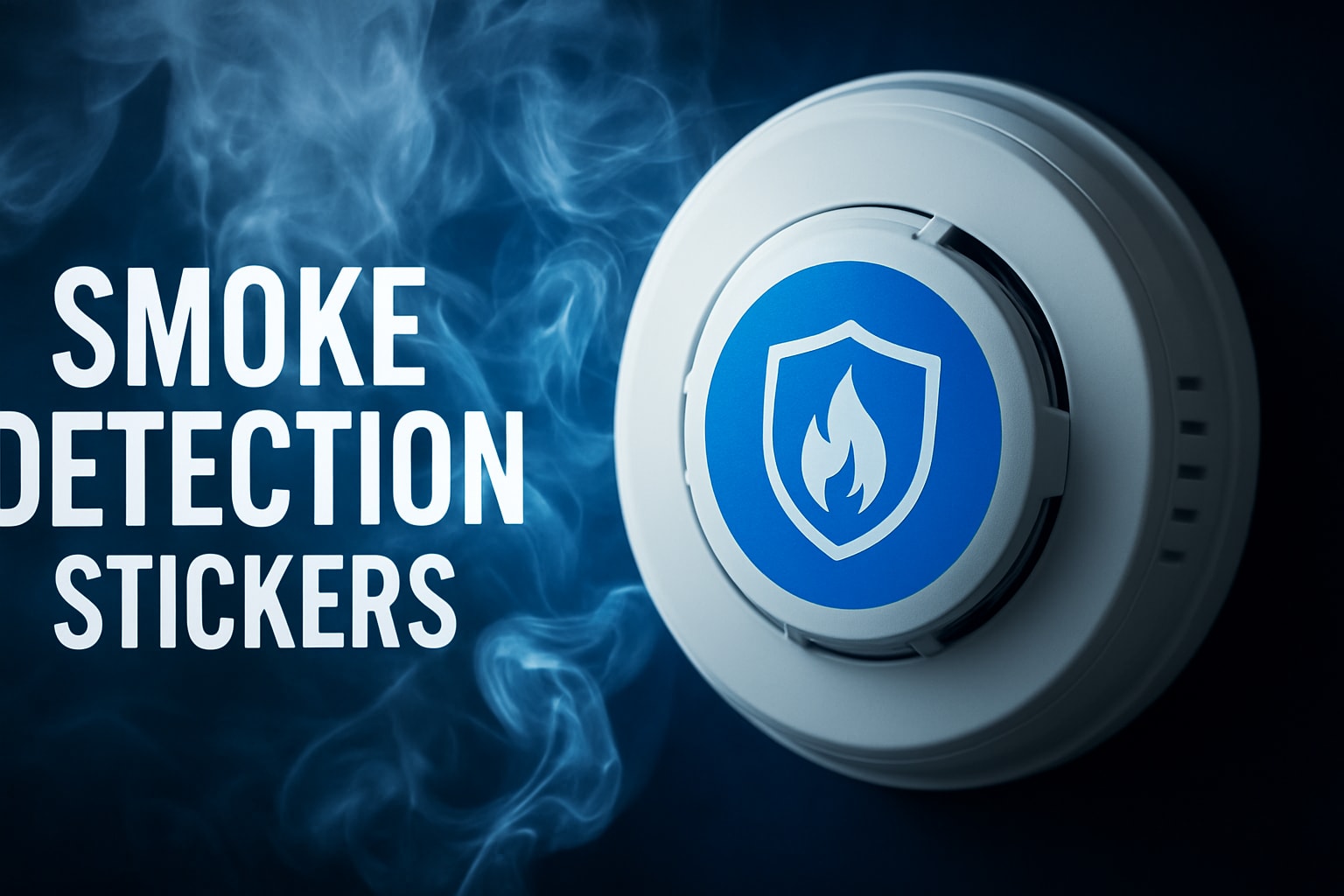
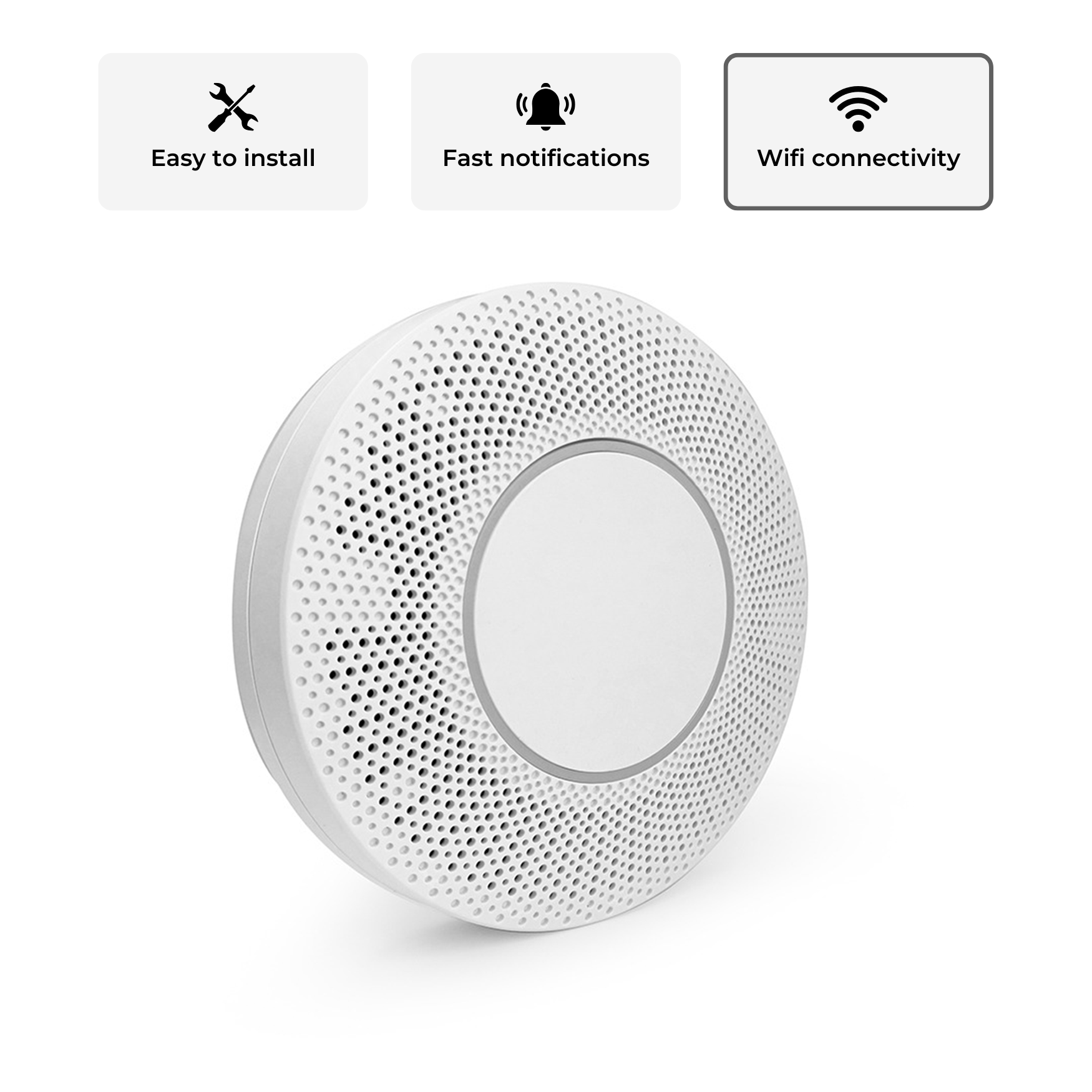
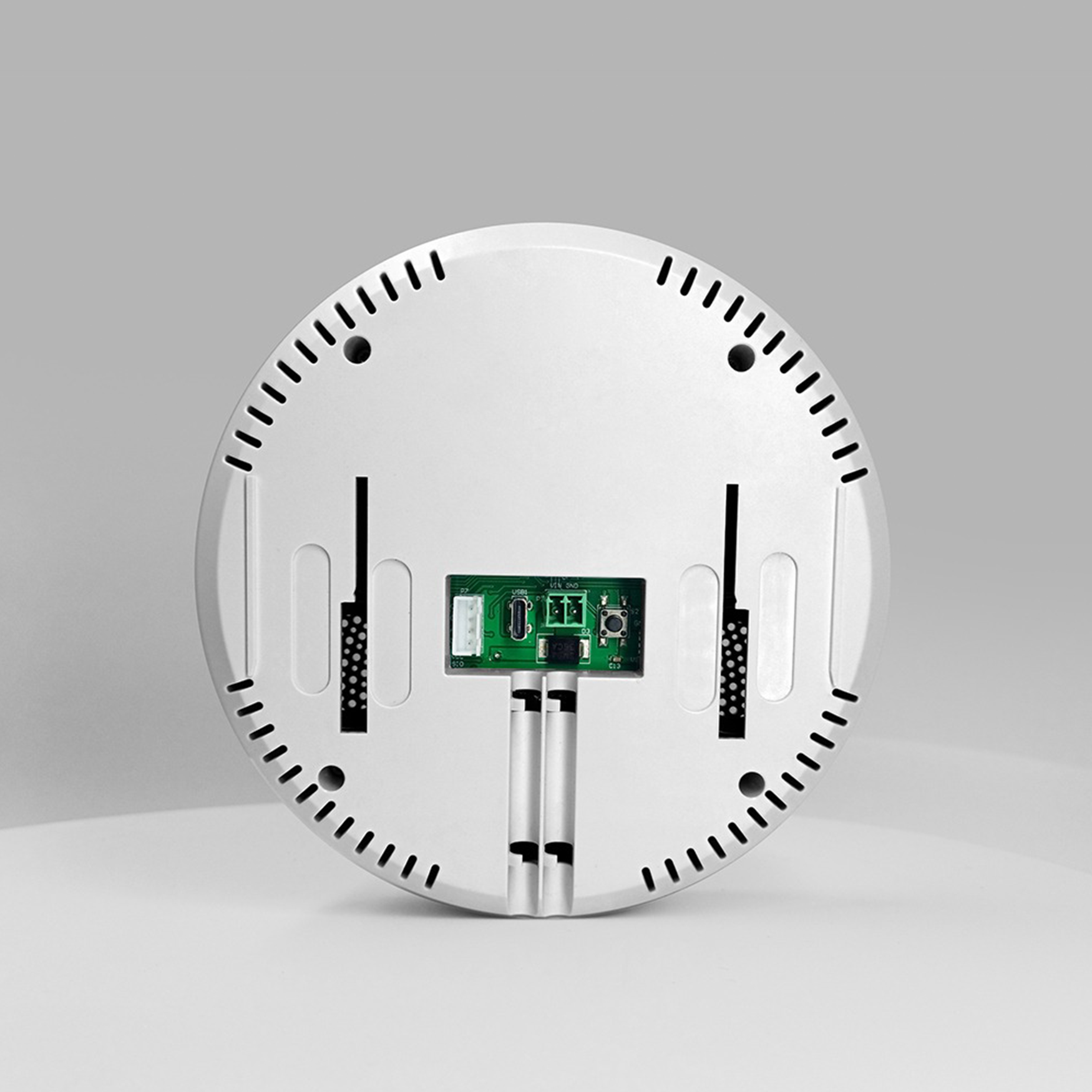

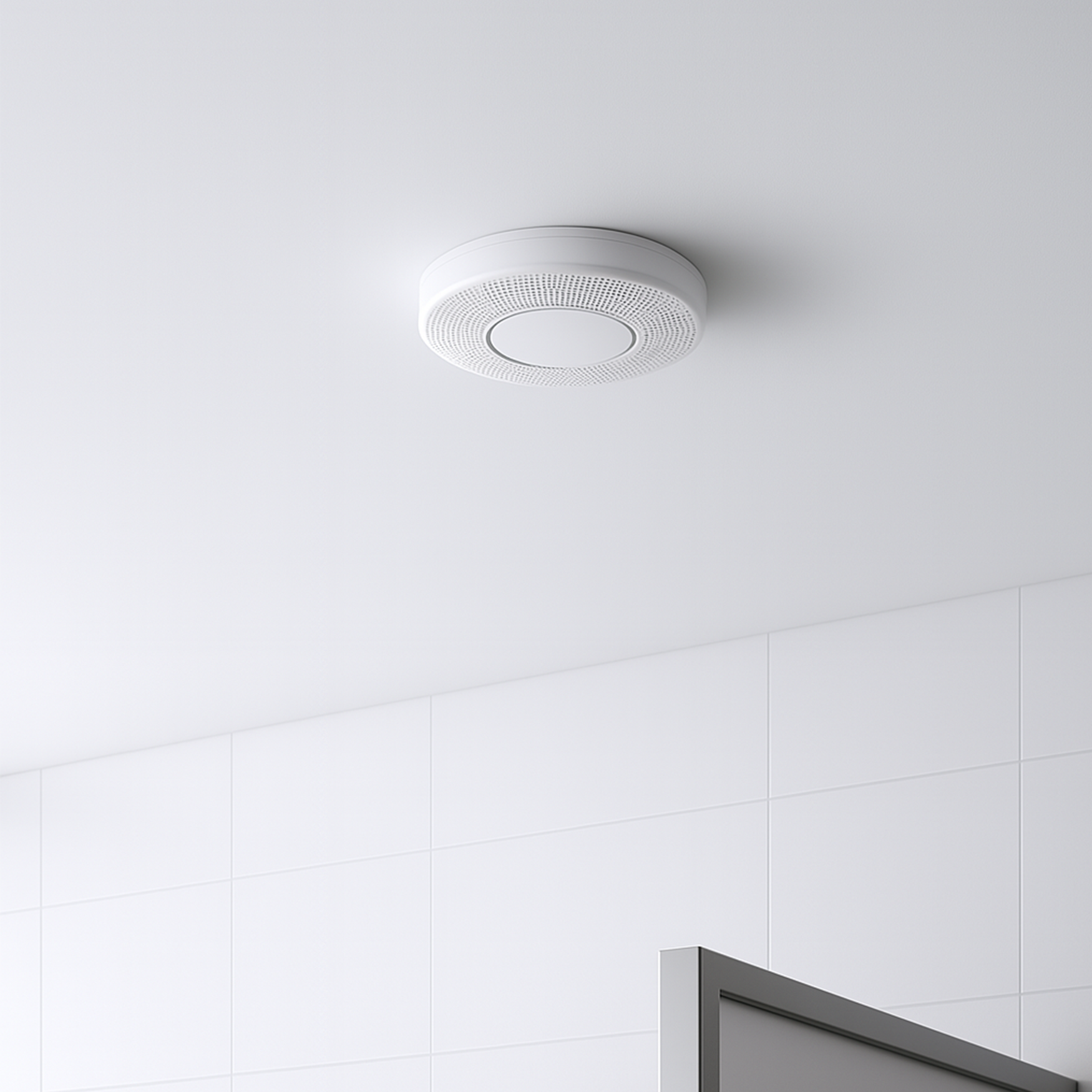
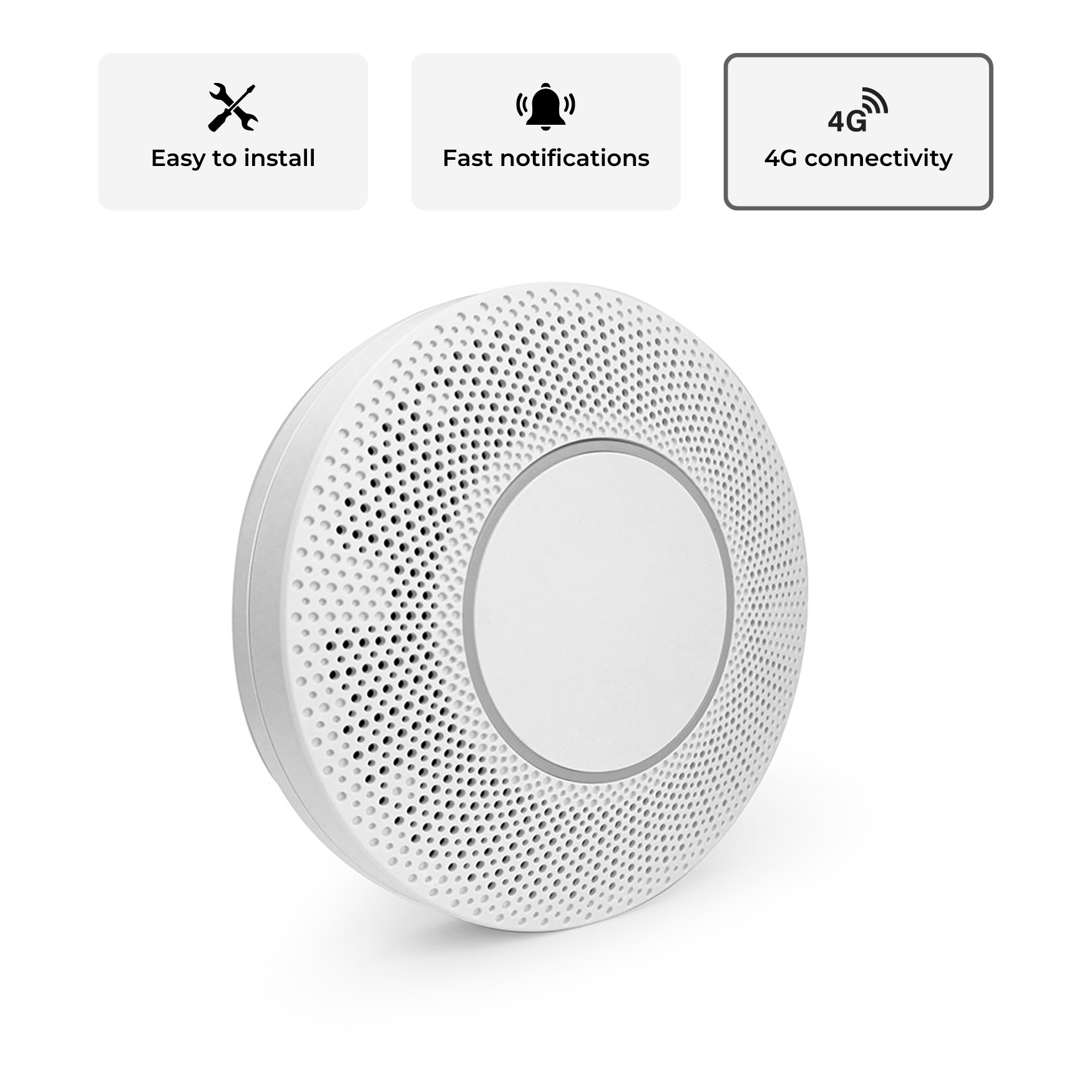
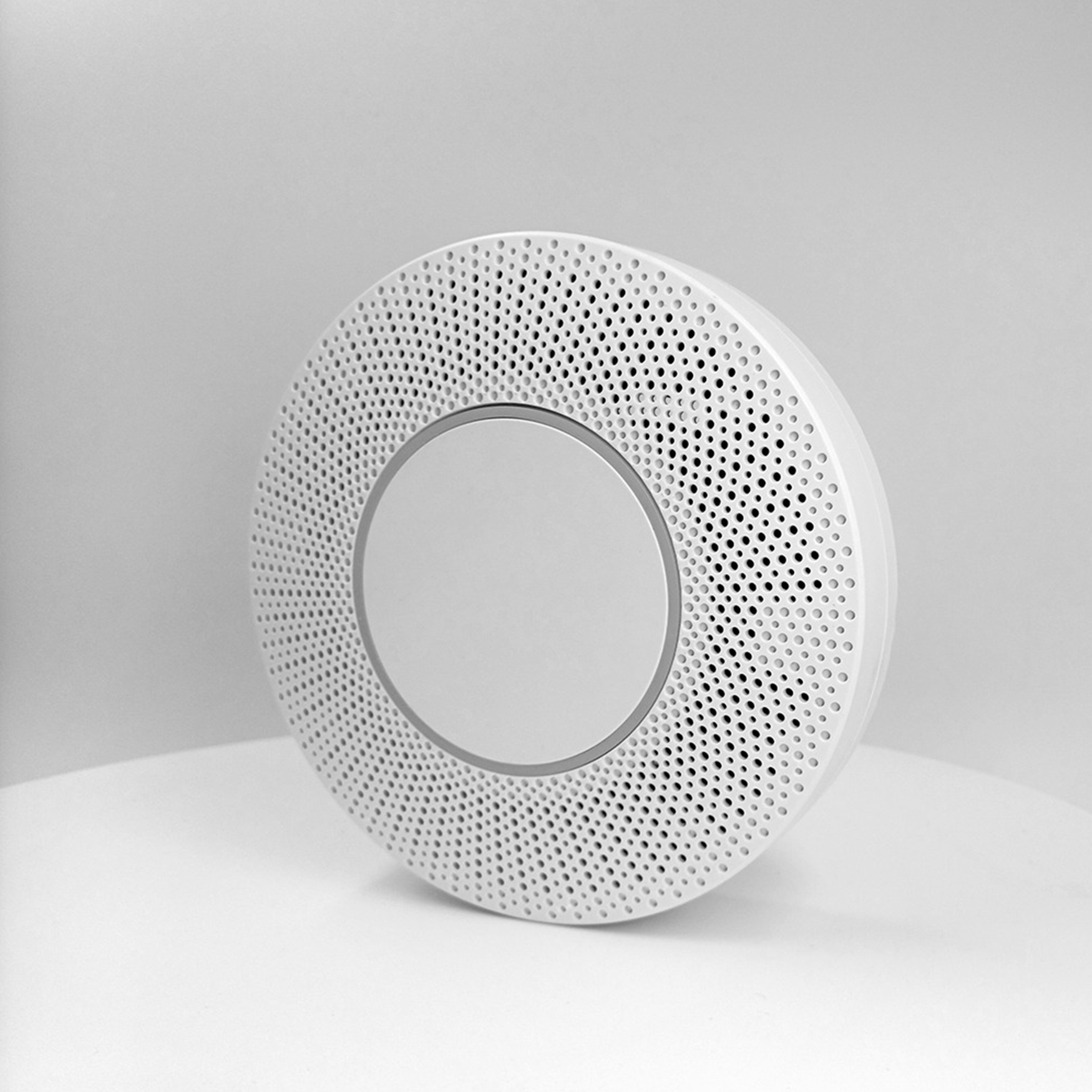
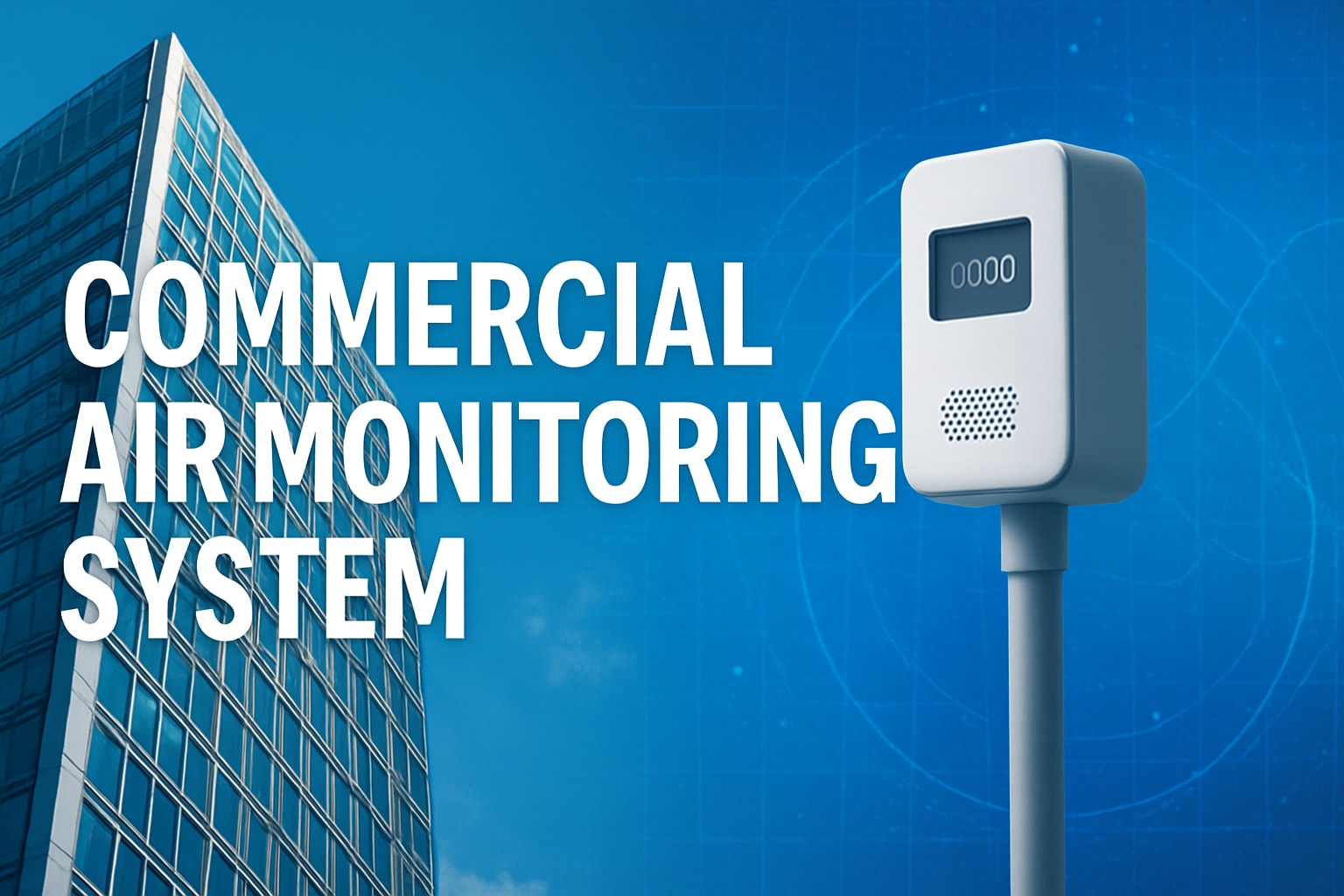


Share:
Environmental Monitoring System Guide: Best Practices for 2025
Smoking Monitor Guide: How to Track and Improve Habits 2025